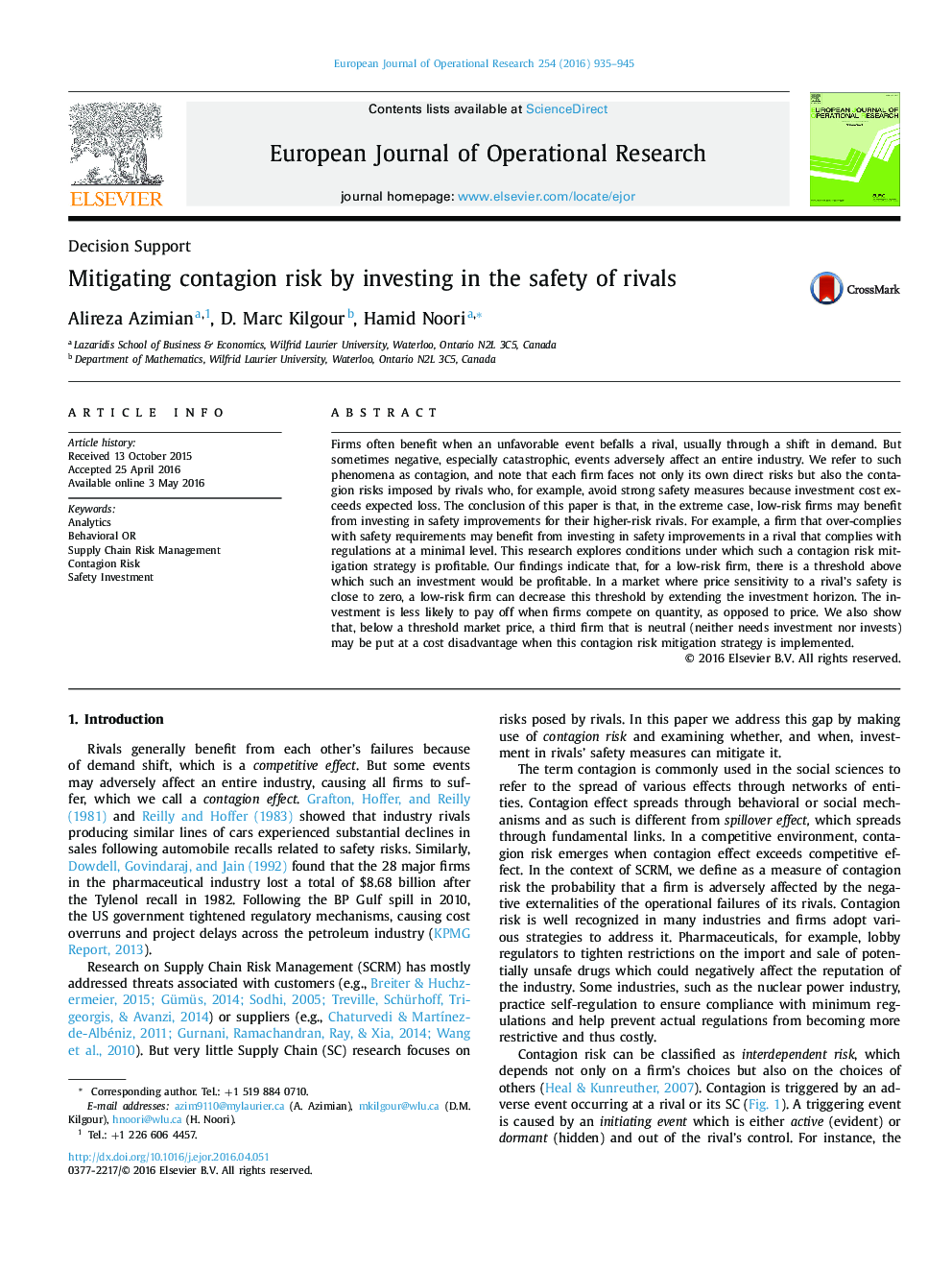| Article ID | Journal | Published Year | Pages | File Type |
|---|---|---|---|---|
| 480518 | European Journal of Operational Research | 2016 | 11 Pages |
•We introduce the notion of contagion risk to the supply chain risk management area.•We examine whether and when investment in the safety of a rival is profitable.•We model safety perception and incorporate it into our investment decision analysis.•There is a threshold price above which the investment is always profitable.•The investment is less likely to repay when firms compete on quantity.•Below a threshold, the investment will disadvantage a third uninvolved firm.
Firms often benefit when an unfavorable event befalls a rival, usually through a shift in demand. But sometimes negative, especially catastrophic, events adversely affect an entire industry. We refer to such phenomena as contagion, and note that each firm faces not only its own direct risks but also the contagion risks imposed by rivals who, for example, avoid strong safety measures because investment cost exceeds expected loss. The conclusion of this paper is that, in the extreme case, low-risk firms may benefit from investing in safety improvements for their higher-risk rivals. For example, a firm that over-complies with safety requirements may benefit from investing in safety improvements in a rival that complies with regulations at a minimal level. This research explores conditions under which such a contagion risk mitigation strategy is profitable. Our findings indicate that, for a low-risk firm, there is a threshold above which such an investment would be profitable. In a market where price sensitivity to a rival's safety is close to zero, a low-risk firm can decrease this threshold by extending the investment horizon. The investment is less likely to pay off when firms compete on quantity, as opposed to price. We also show that, below a threshold market price, a third firm that is neutral (neither needs investment nor invests) may be put at a cost disadvantage when this contagion risk mitigation strategy is implemented.
